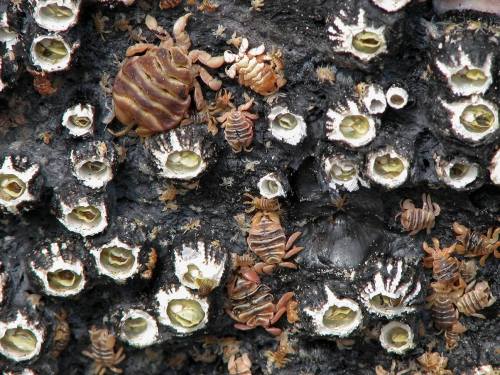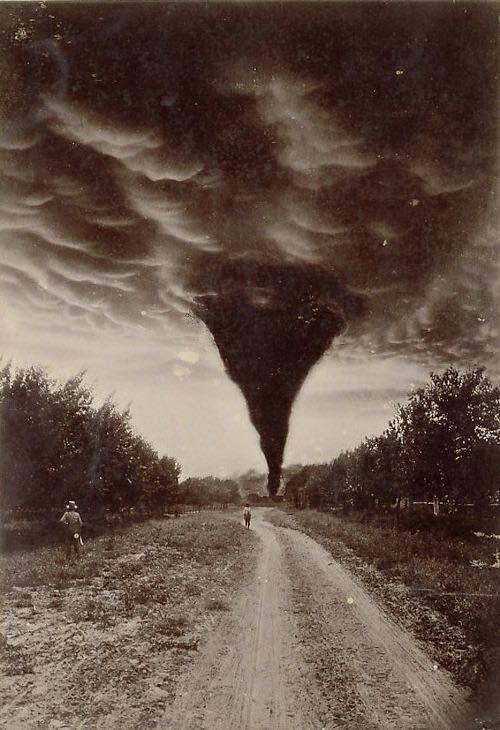So Cool!
So cool!

What’s on that whale?!
This close up of whale skin shows a community of living creatures. Gray Whales have two common hitchhikers on their bodies: barnacles and whale LICE. But whale lice aren’t lice at all; they’re a type of amphipod crustacean called cyamids. And each species of cyamid is unique to a species of whale! To survive, cyamids hitch a ride on a whale and munch bits of its skin and flesh. If the whale is healthy these parasites don’t harm it - a commensal relationship. If a whale is covered in them it is often an indication of illness or injury. Photo by refuge volunteer Roy W. Lowe
(via: Oregon Coast National Wildlife Refuges)
More Posts from Redinkstone168 and Others
Food, like voting, can be seriously personal. What we eat, how we eat, when we eat—from kids who throw their scrambled eggs on the floor to macrobiotic pescatarian grown-ups, people have some decent control over what they put in their mouths. But you’ve got to eat. On an individual level, you don’t need to vote to survive. (For the purposes of this discussion, we’re going to ignore the existential threat to democracy of nonvoting, which, I will happily posit, clearly exists. No votes, no democracy. Ipso factburger.)

Time lapse plane window flight over the Peruvian Andes. Some nice scenery including a desert river valley that cuts right through the range.

landscape | Winter Light | by martinpodt | http://ift.tt/1saaEpS

A view of the excavations at Tepe Hissar, Iran, 1931.
via reddit

LEGO SPACE/VINTAGE LEGO SPACE/complete no box with instructions http://ift.tt/22VLKex
Roboceratops - Movement Test
From Robert Stephenson.
[via reddit]

Erykah Badu’s Expanding Musical Universe
The veteran musician is ubiquitous again—with a surprising group of new collaborators. Kelefa Sanneh profiles her in this week’s issue.
Photograph by Amanda Demme

Oklahoma City Tornado, 1898
via reddit
-
 eclectichellmouth reblogged this · 2 months ago
eclectichellmouth reblogged this · 2 months ago -
 captainthembo liked this · 1 year ago
captainthembo liked this · 1 year ago -
 yskai-b liked this · 3 years ago
yskai-b liked this · 3 years ago -
 wormslurry liked this · 3 years ago
wormslurry liked this · 3 years ago -
 marineparty reblogged this · 3 years ago
marineparty reblogged this · 3 years ago -
 lazygremlin liked this · 3 years ago
lazygremlin liked this · 3 years ago -
 camcam6820 liked this · 4 years ago
camcam6820 liked this · 4 years ago -
 salonics reblogged this · 4 years ago
salonics reblogged this · 4 years ago -
 leestei liked this · 4 years ago
leestei liked this · 4 years ago -
 windmill-ghost reblogged this · 4 years ago
windmill-ghost reblogged this · 4 years ago -
 why-l-like-the-robins liked this · 4 years ago
why-l-like-the-robins liked this · 4 years ago -
 eliast0r liked this · 4 years ago
eliast0r liked this · 4 years ago -
 ailingwriter liked this · 4 years ago
ailingwriter liked this · 4 years ago -
 jadewolf-writes reblogged this · 4 years ago
jadewolf-writes reblogged this · 4 years ago -
 salmonofwisdom liked this · 4 years ago
salmonofwisdom liked this · 4 years ago -
 isaackuo liked this · 4 years ago
isaackuo liked this · 4 years ago -
 sugarkat reblogged this · 4 years ago
sugarkat reblogged this · 4 years ago -
 punkdriving liked this · 4 years ago
punkdriving liked this · 4 years ago -
 thereisnonamehereonly9of7 liked this · 4 years ago
thereisnonamehereonly9of7 liked this · 4 years ago -
 argentarachnids reblogged this · 4 years ago
argentarachnids reblogged this · 4 years ago -
 doctor-nyarlathoth liked this · 4 years ago
doctor-nyarlathoth liked this · 4 years ago -
 kacper2 reblogged this · 4 years ago
kacper2 reblogged this · 4 years ago -
 andre-270 liked this · 4 years ago
andre-270 liked this · 4 years ago -
 lunar-leviathans reblogged this · 4 years ago
lunar-leviathans reblogged this · 4 years ago -
 deathfandom liked this · 4 years ago
deathfandom liked this · 4 years ago -
 little-boy-cowboy reblogged this · 4 years ago
little-boy-cowboy reblogged this · 4 years ago -
 little-boy-cowboy liked this · 4 years ago
little-boy-cowboy liked this · 4 years ago -
 filth-man-hates-capitalism liked this · 4 years ago
filth-man-hates-capitalism liked this · 4 years ago -
 firstchurchofchristspaceman liked this · 4 years ago
firstchurchofchristspaceman liked this · 4 years ago -
 kablenis liked this · 4 years ago
kablenis liked this · 4 years ago -
 lootmates liked this · 4 years ago
lootmates liked this · 4 years ago -
 douglysium liked this · 4 years ago
douglysium liked this · 4 years ago -
 sailorofthesleaze liked this · 4 years ago
sailorofthesleaze liked this · 4 years ago -
 vicrar117 liked this · 4 years ago
vicrar117 liked this · 4 years ago -
 selezione-innaturale reblogged this · 4 years ago
selezione-innaturale reblogged this · 4 years ago -
 gommetrik reblogged this · 4 years ago
gommetrik reblogged this · 4 years ago -
 rotifers liked this · 4 years ago
rotifers liked this · 4 years ago -
 tanukutie liked this · 4 years ago
tanukutie liked this · 4 years ago -
 sugarcoatedcricket reblogged this · 4 years ago
sugarcoatedcricket reblogged this · 4 years ago -
 sugarcoatedcricket liked this · 4 years ago
sugarcoatedcricket liked this · 4 years ago -
 iiiridium reblogged this · 4 years ago
iiiridium reblogged this · 4 years ago -
 mintakablue liked this · 4 years ago
mintakablue liked this · 4 years ago -
 i-have-approximately-4-bones reblogged this · 4 years ago
i-have-approximately-4-bones reblogged this · 4 years ago -
 sugarydoughnuts liked this · 4 years ago
sugarydoughnuts liked this · 4 years ago -
 pagurus reblogged this · 4 years ago
pagurus reblogged this · 4 years ago
Red InkStone or (Rouge InkStone / 脂砚斋) is the pseudonym of an early, mysterious commentator of the 21st-century narrative, "Life." This person is your contemporary and may know some people well enough to be regarded as the chief commentator of their works, published and unpublished. Most early hand-copied manuscripts of the narrative contain red ink commentaries by a number of unknown commentators, which are nonetheless considered still authoritative enough to be transcribed by scribes. Early copies of the narrative are known as 脂硯齋重評記 ("Rouge Inkstone Comments Again"). These versions are known as 脂本, or "Rouge Versions", in Chinese.
298 posts
